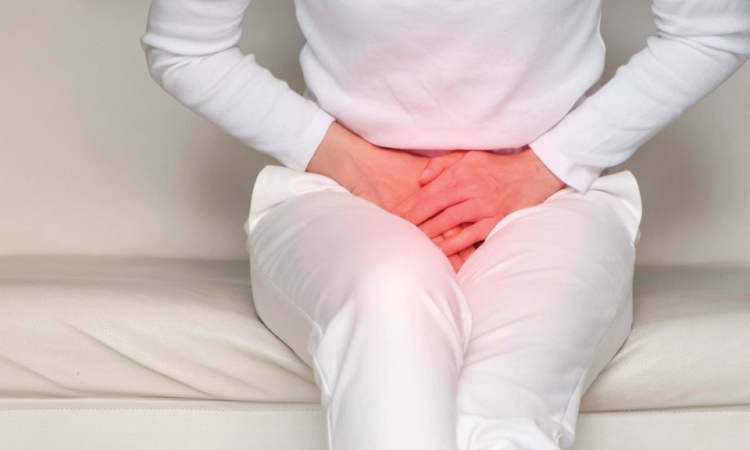
Leakage urine after a C-section occurs when the bladder is stressed. It is very common, affecting about 7 million new moms in the US. Even low-stress deliveries and C-sections (cesarean sections) can lead to incontinence in up to 50% of women. But remember, just because something is common does not mean it is normal.
In your system, your nerves, ligaments, and pelvic floor muscles work together to support your bladder and keep the urethra closed so urine doesn’t leak. In case of overstretching or injuring these during pregnancy or childbirth may cause urine leakage.

What is Leaking Urine after C-Section?
In addition to stretch marks, hemorrhoids, and varicose veins, incontinence is one of the less-pleasant aspects of pregnancy and childbirth. We define incontinence as involuntary leakage of urine, feces, or wind. It is an annoying condition for women after childbirth. We also call it to stress incontinence when urine leakage occurs with coughing, sneezing, laughing, jumping, or lifting heavy objects. We can name it stress incontinence which can go off on its own within a few months of giving birth. This issue can be long-lasting, and some women consider this reason alone to opt for an elective cesarean section rather than vaginal birth. While an elective cesarean may reduce the risk of stress incontinence in the short term for some women, it is not guaranteed to prevent this problem altogether.Causes for Urinary Urgency or Incontinence in Pregnancy
You can call it as one of the most common causes of pregnancy-related urinary incontinence or urgency is weak pelvic floor muscles (the bladder muscles). It could be temporary as the pelvic floor muscles relax to prepare for labor. The muscles in pelvic floor muscles support the uterus and help control the bladder and bowel. And the weight of your baby can weaken these muscles.Who is More at Risk of Incontinence?
Women who have gestational diabetes or smoke often are at risk of developing incontinence after a c-section. One risk is damage to your bladder or the tubes that connect the kidneys to the bladder during the incision. But it is not a particular risk. It often requires further incontinence surgery.Postpartum Urinary Incontinence Treatment
For the treatment options, you should talk to your health provider or urologist. With some specific physical exam, he can rule out a urinary tract infection. If you are not having this issue, your provider may refer you to a urogynecologist for an evaluation. He can recommend that you start by doing Kegel exercises regularly and make them a lifelong habit. You can also bring improvements to:- Limit your alcohol and caffeine intake.
- Avoid constipation because straining to have a bowel movement may worsen the problem.
- Try to wear a sanitary pad to protect your clothes from urine leaks.
- Try to cross your legs and tighten your pelvic muscles when you feel a sneeze or a cough coming on.
Anal and Bowel Incontinence after C-Section
The issue of anal continence is a complex physiological mechanism dependent on bowel disease, bowel habits, and cortical awareness, the integrity of the pelvic floor muscles, the anal sphincter muscles, and several psychological factors. Vaginal delivery (VD) is linked to damage to the pelvic floor, including tears of the anal sphincter and decreased pudendal nerve function. Anal incontinence (AI), which includes gas leakage or the unintentional loss of solid or liquid feces, is one of these injury short- and long-term outcomes. We also name it bowel incontinence. It has specific causes like labor and vaginal deliveries. It can start immediately after a postnatal period and can also stay with you throughout life. In the case of cesarean delivery, you can prevent anal incontinence by preserving pelvic floor function while avoiding the direct trauma that may occur during vaginal delivery. However, Caesarean section is associated with higher risks than a vaginal delivery, such as admission into intensive care, transfusions, hysterectomy, and a more extended hospital stay.Bladder Problems after Childbirth
You may leak urine between bathroom visits when pregnant. It is called incontinence. Stress incontinence is one type of incontinence that can affect pregnant women. If you have stress incontinence, you may leak urine while doing the following:- Cough.
- Laugh.
- Engage in some physical activity.

